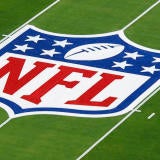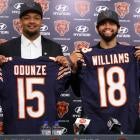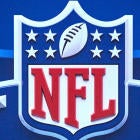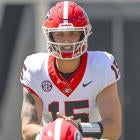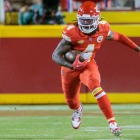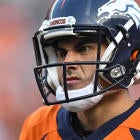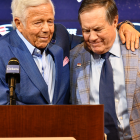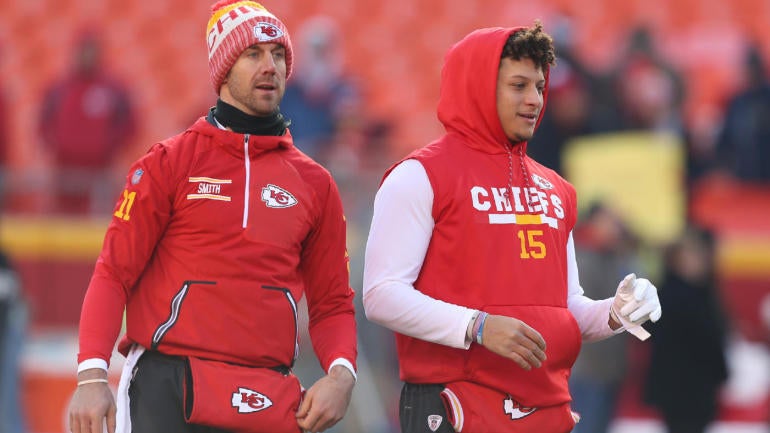
As most people following the NFL know by now, this is a passing league. For the most part, teams' fortunes rise and fall on the strength of the quarterback play, and the best teams tend to be led by the best quarterbacks.
Because that's the case, it's important to put those players in as good a position as possible to succeed. A couple weeks ago, we examined the impact that having an offensive- or defensive-leaning head coach can have on a young quarterback. Today, we're going to take a look at the timing of when the player actually steps into the lineup.
Between 2000 and 2019, there were been 91 quarterbacks that entered the league and become a team's full-time starter at some point. (That's an average of around 4.5 per year.) It may have happened right away, or it may have happened a few weeks or even years down the line. It may have happened with the team that drafted them or it may have happened with another team entirely. But at one point or another, they all got a shot to prove themselves.
But how much does it matter exactly when that shot came? That's what we set out to determine.
Of the aforementioned 91 quarterbacks, just 29 of them started under center in Week 1 of their rookie season. An additional 21 took over the reins at some point within the first eight games of that season, while 14 more grabbed them in the back half of their rookie year. That's 64 of the 91 passers who became the full-time starter during their initial season. Of the remaining 27 players, 16 took the job at some point in Year 2, three took it in Year 3, and eight had to wait until Year 4 of their career or later.
Here's the breakdown:
Now, the circumstances these players stepped into ranged wildly. In some cases, the way they assumed the starting job was not actually the plan their team had for them.
Dak Prescott, for example, was drafted as a developmental quarterback behind Tony Romo. He even began training camp behind Kellen Moore. But Moore broke his ankle, Romo broke his back, and Prescott started Week 1 and never gave the job back. In the same draft class, Carson Wentz was going to sit behind Sam Bradford; but Teddy Bridgewater suffered a catastrophic knee injury and the Vikings were left without a quarterback, so the Eagles traded Bradford to Minnesota and thrust Wentz right into the lineup. More recently, Justin Herbert was going to sit for a while behind Tyrod Taylor, but Taylor suffered a punctured lung while receiving a pregame pain injection, and Herbert surprisingly had to step in in Week 2. In the cases of Blake Bortles, Baker Mayfield, Josh Allen, Mitchell Trubisky, and more, they were supposed to sit behind stop-gap starters; but those players played so badly that the plans for them to do so were abandoned.

Pick Six Newsletter
Crafted By The Best NFL Experts
Get the day's big stories + fun stuff you love like mock drafts, picks and power rankings.
Thanks for signing up!
Keep an eye on your inbox.
Sorry!
There was an error processing your subscription.
Still other players got the job in even stranger ways. Tom Brady, famously, was Drew Bledsoe's backup and may never have gotten a chance at all were it not for Mo Lewis. Matt Cassel appeared only in garbage time for three full seasons and then filled in for Brady when the latter tore his ACL, and secured a full-time job in Kansas City the following season. Another Brady backup was supposed to be his heir apparent (Jimmy Garoppolo), only Brady played so well that he kept the youngster on the bench. Garoppolo got to start two games while Brady was suspended, but he got injured. It wasn't until he was traded to the 49ers midseason and then sat several more games while learning the playbook, that he got a chance to be the guy. The Chargers drafted Philip Rivers to replace Drew Brees, but then saw Brees excel for two years before they let him leave in free agency amid concerns about his shoulder injury and gave the job to Rivers for good. David Garrard was drafted a year before Byron Leftwich, saw Leftwich become the starter while Garrard backed him up, then eventually took over when Leftwich's time was done. Kirk Cousins was drafted the same year as Robert Griffin III and served as his backup while Griffin quickly became a star, but when injuries ruined Griffin's trajectory, Cousins stepped in. Aaron Rodgers had to wait through three different Brett Favre will-he, won't-he retirement dramas before taking the job in Green Bay. (And his successor, Jordan Love, just had to do the same.) The list goes on and on.
In other cases, the progression was much smoother. A whole bunch of top picks in the draft knew they would start right away, and did exactly that. The plan for the Bengals, Falcons, and Chiefs was to have Carson Palmer, Michael Vick, and Patrick Mahomes sit behind a veteran for a year and then take over, and that's exactly what happened.
In any case, we went through and compiled the career statistics for every single one of those players, broken down by when they got their chance to become the full-time starting quarterback. The results were as follows:
| Starting? | No Wait | Game 2-8 | Game 9-16 | Year 2 | Year 3 | Year 4 |
|---|---|---|---|---|---|---|
| # of QBs | 29 | 21 | 14 | 16 | 3 | 8 |
| Comp % | 62.5% | 61.9% | 60.9% | 63.0% | 65.2% | 63.7% |
| YPA | 7.09 | 6.96 | 6.93 | 7.27 | 7.73 | 7.40 |
| TD % | 4.34% | 4.14% | 4.07% | 4.73% | 5.16% | 4.89% |
| INT % | 2.50% | 2.68% | 2.75% | 2.38% | 2.61% | 2.25% |
| QB Rtg | 87.7 | 85.3 | 83.8 | 90.7 | 94.9 | 92.9 |
| EPA/DB | 0.04 | 0.02 | 0.01 | 0.10 | 0.16 | 0.09 |
| 1st/Att | 34.4% | 33.9% | 33.0% | 35.4% | 38.0% | 35.5% |
| Expl/DB | 7.8% | 7.7% | 8.0% | 8.4% | 9.2% | 8.6% |
| Sack % | 6.34% | 6.27% | 5.99% | 5.62% | 5.45% | 6.03% |
In almost every category, the group of players that took over in Year 3 performed the best, while the players who became starters in the second half of their rookie season performed the worst. Of course, these results are subject to all sorts of small-sample size concerns.
You can't just look at the Year 3 column and see that those players have significantly out-performed the others and conclude that the correct move is to sit your preferred starter for two seasons and then give him the job. That group consists of only three players, two of whom (Rivers and Romo) went on to become high-level starters for a decade or more. Similarly, you can't just look at the Game 9-16 column and conclude that you should never give your guy the job during that section of the season because those players haven't been as good. It's entirely possible that players like JaMarcus Russell, Charlie Frye, Drew Lock, and more were going to fail regardless of when they stepped into the lineup.
It does seem notable, though, that the rookies afforded the opportunity to start right away have generally out-performed those who had to wait a bit but still stepped into the lineup in the first half of their rookie season, who in turn out-performed those who had to wait until the second half of the year before their team gave them a shot. It's also worth noting that while in general, the quarterbacks who waited until Year 2 or beyond to become the starter have out-performed their rookie-starter counterparts, the former sample has the benefit of including Brady, Mahomes, Rodgers, Brees, Rivers, and Romo. That sextet makes up 22.2% of the "had to wait at least a year" sample, which will skew things quite a bit. Conversely, Allen, Herbert, Prescott, Ben Roethlisberger, Joe Burrow, and Russell Wilson (just to pick a few notable examples) comprise only 9.4% of the rookie-starter group. It's not an exact one-to-one comparison.
Still, it's worth noting when you look at a player like the aforementioned Love that the "waiters" didn't necessarily have to wait because they weren't good enough to be starters. Sometimes, circumstances just lock them into a backup job for longer than expected, and when they get the chance to shine, they take advantage. Other times, though, they turn into Osweiler. You never really know what you're going to get until you see these guys on the field.









